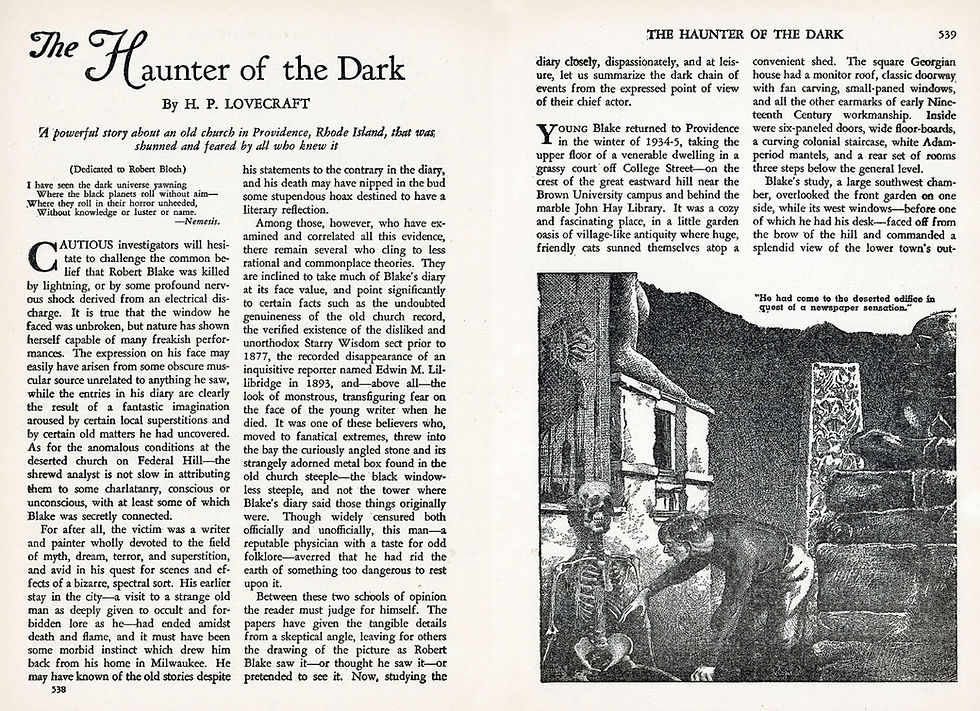Tony's Review of The Haunter of the Dark
- Tony Travis

- Sep 7
- 2 min read


While Lovecraft remains a problematic figure, something I have noted before. There is no denying the impact of his work on horror and weird fiction. The Haunter of the Dark is one of his later stories, first published in 1936, and it shows both the strength and the unease of his style.
The story follows Robert Blake, a writer fascinated with the occult. His curiosity leads him to a strange, abandoned church in Providence, where he discovers the remains of a cult devoted to an ancient cosmic entity. Inside he finds the “Shining Trapezohedron,” a crystal that serves as a window and summoning tool for a being known as the Haunter of the Dark. As with so many of Lovecraft’s tales, curiosity soon turns to terror as Blake realizes that what he has found cannot be controlled and that some knowledge is best left hidden.
The atmosphere here is vintage Lovecraft. The decaying church, the sense of history layered in dust and whispers, the unearthed horror that has been waiting patiently for a fool to uncover. Which all builds toward the inevitable collapse of the protagonist. There is also a sense of circularity, as this story connects back to Robert Bloch’s earlier tale The Shambler from the Stars, creating a rare bit of shared mythmaking between two masters of horror.
What makes The Haunter of the Dark stand out is its focus on forbidden knowledge and objects. The Shining Trapezohedron is a perfect example of Lovecraft’s fascination with artifacts that are more than they appear, much like the infamous Necronomicon. The artifact itself feels like a bridge between human hands and the vast, incomprehensible cosmos—a thing that should never have been touched.
The story has also influenced later horror. The idea of an ancient, unknowable being bound to an object has shown up repeatedly in fiction, film, and games. Even the name of the creature, “Haunter of the Dark,” captures Lovecraft’s signature mix of vagueness and menace.
It is worth noting that, unlike Dracula or Frankenstein, which give their monsters clear voices and presence, Lovecraft’s horrors remain distant, half-seen, and more terrifying for it. The Haunter is not a villain with dialogue but a shadow of the unknown that destroys simply by being.
In the end, The Haunter of the Dark is classic Lovecraft: heavy with atmosphere, steeped in dread, and centered on the danger of curiosity. It is not his most famous tale, but it is one of his most effective, leaving behind a lingering fear of what waits in the darkness, watching, patient, and hungry.



Comments